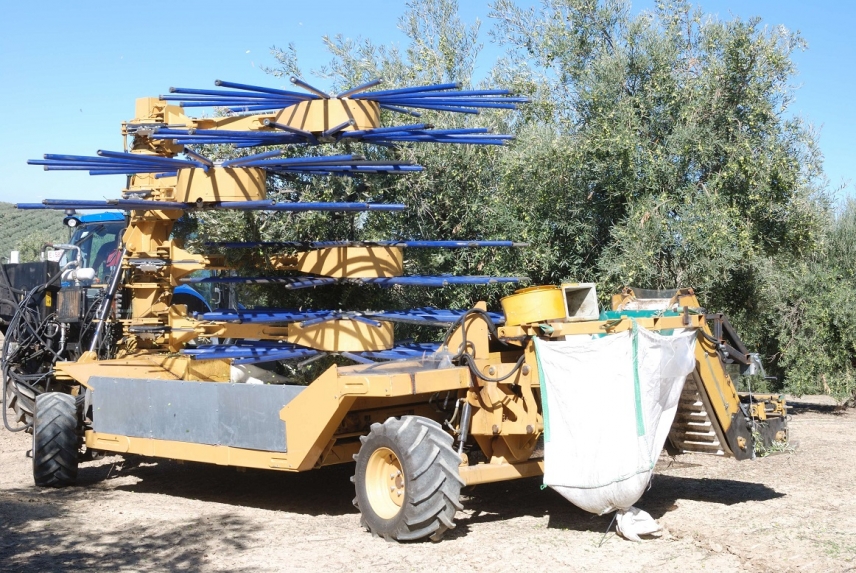 The team of researchers from the University of Cordoba’s School of Agricultural and Forestry Engineering is made up of Jesús A. Gil-Ribes, Gregorio Blanco – Roldán, Rafael Sola-Guirado, Sergio Castro-García and Francisco J. Castillo Ruiz. This team has designed a harvester to be used in traditional olive groves with irregular trunks and large canopies so as to let farmers that still make a living from these kinds of olive groves continue doing so in an increasingly competitive market.
The team of researchers from the University of Cordoba’s School of Agricultural and Forestry Engineering is made up of Jesús A. Gil-Ribes, Gregorio Blanco – Roldán, Rafael Sola-Guirado, Sergio Castro-García and Francisco J. Castillo Ruiz. This team has designed a harvester to be used in traditional olive groves with irregular trunks and large canopies so as to let farmers that still make a living from these kinds of olive groves continue doing so in an increasingly competitive market.
The lack of mechanization to date is due to the physical characteristics of a design based on leaving up to 14 meters between each tree and also due to these trees having multiple trunks and large, irregular canopies. To date, picking olives was a job for a crew of 8 to 12 people, including those who operate the olive vibrator, those who shake the olive trees and those that pick up and move the tarps.
With the new prototypes designed by the University of Cordoba, farmers will have a machine that knocks down, picks up and bags the olives, thereby simplifying the process and decreasing the investment in staff and time.
This research, carried out over the last 10 years, focused on finding a machine that would knock olives on the target surfaces by shaking the branches with canopy shakers. Then, with a conveyor belt and destemming systems, the end product would be clean and packaged in bags, ready to be transported to the oil press.
Bearing in mind the size of these olive trees, it is necessary for the machine to work in circles in order to be able to cover the whole canopy of each tree.
In order to obtain a final result that could be marketed in the next few years, the researchers designed two prototypes. One was done by adapting a machine with the same philosophy used to harvest citrus fruits. The other was designed from scratch in Cordoba and is composed of four drums with blades that move on a linear axis in order to shake branches. Each of these drums adapts to the shape of the canopy, with different degrees of pressure to knock down olives with greater precision and without hurting the tree, due to the four pressure sensors that control the machine’s approach to the olive tree. This system also includes a remote control system of the machine and a tool that weighs the olives, so farmers can supervise their harvests. 
Despite this advance being invented to create new opportunities for traditional olive farmers, whose harvests will become more profitable, its application to intensive olive farming could also be quite advantageous. In intensive olive groves, where there are up to 300 olive trees per hectare each in a 7 by 5 meter area, the density of trees could be doubled by reducing the distance between olive trees to 2.5 meters and creating long linear hedges that this new harvester could access in a linear fashion instead of a circular one.
In search of assuring the sustainability of Andalusian olive groves, these and other adaptations could be researched within line 11 of the new Innolivar agreement, in which these advances could also be applied to table olives, a sector that has even more issues than the olive oil sector.
Sola-Guirado, RR; Blanco-Roldan, GL; Castro-Garcia, S; Castillo-Ruiz, FJ; Gil-Ribes, JA. An innovative circular path harvester for mechanical harvesting of irregular, large-canopy olive trees. INTERNATIONAL JOURNAL OF AGRICULTURAL AND BIOLOGICAL ENGINEERING 11(3):86-93DOI: 10.25165/j.ijabe.20181103.3265.


